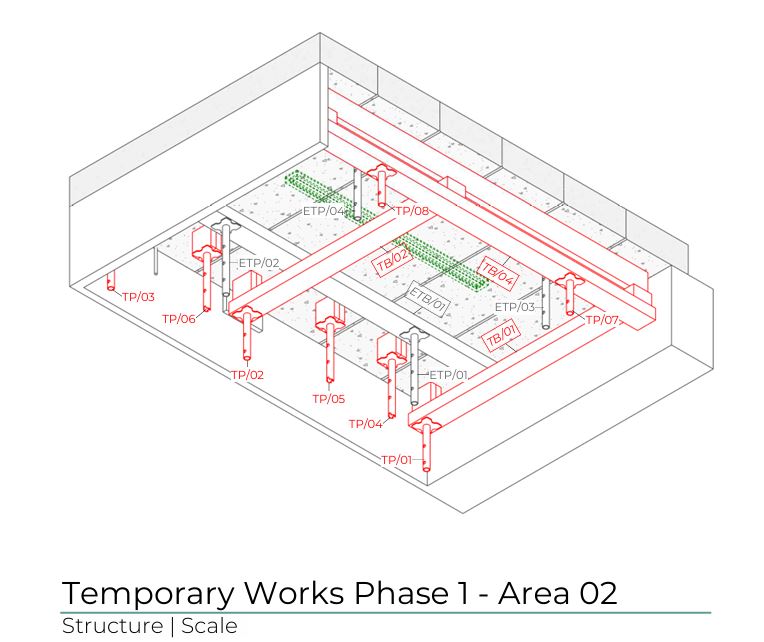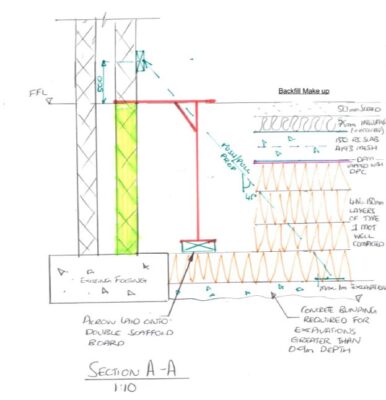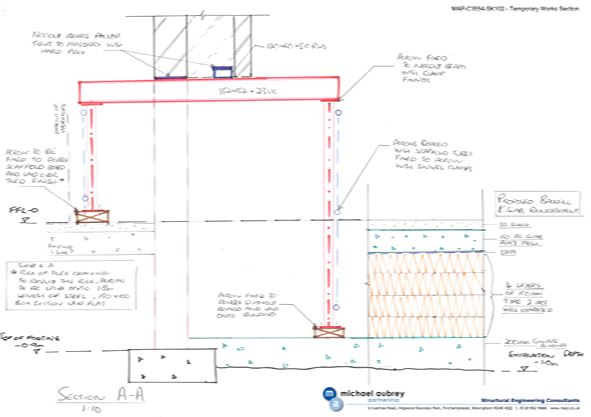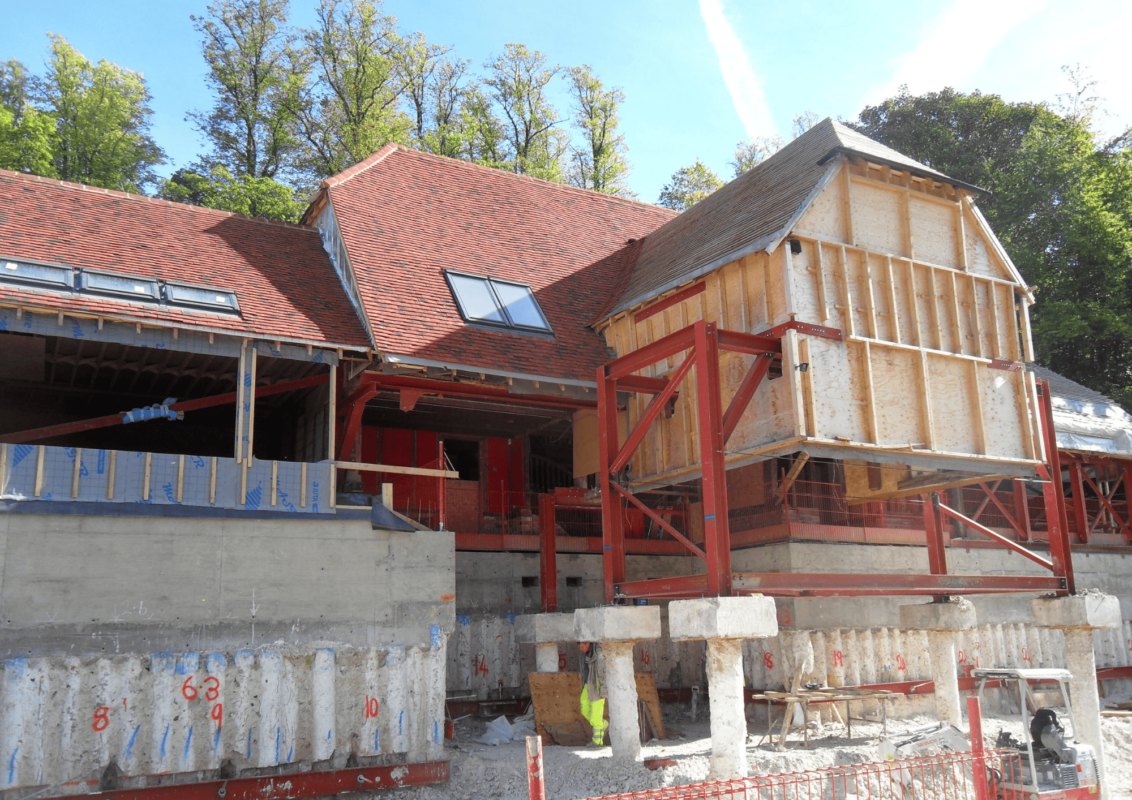If you’ve ever been told, “We don’t do temporary works,” by a structural engineer, you’re not alone.
It’s one of the most common pain points for contractors and developers.
You’re trying to get a steel frame propped, a basement dug safely, or a wall retained mid-demolition and suddenly the structural engineer steps back.
So, why do most structural engineers avoid designing temporary works? And how can you manage that risk without delaying your programme?
Let’s break it down.

1. Temporary Works Are a Specialist Discipline
While permanent works are designed for long-term use under predictable loads, temporary works are often riskier, more variable, and require a different skill set:
- Changing load paths
- Construction sequencing
- Unknown site conditions
- Short-term safety-critical elements
Most consulting engineers are trained and insured for permanent structure design, not the temporary measures needed during construction. That’s why they won’t take it on: it’s outside their remit and professional indemnity cover.
2. They’re Not Covered by PI Insurance
Designing temporary works comes with higher risk. Props collapsing, excavations failing, or inadequate sequencing can result in injury, delay, or collapse. The more complex the greater the requirements for contractor competence.
Unless a compnay has experience in temporary works design, it’s not worth the risk, which is why many structural engineers draw a clear line. But realistically they know more about the loadpaths, permanent and temporary, so should be well placed to manage the temporary situation. Taking this knowledge into the construction phase is invaluable.

3. They Can’t Guarantee Construction Methodology
Temporary works often depend on how something is built, not just what is built.
For example:
- Will the builder support the wall before or after cutting the opening?
- Are props installed on solid ground or backfilled subsoil?
- Is access possible to erect the system safely?
Most consulting engineers aren’t on site and aren’t supervising construction, so they can’t verify these critical assumptions and therefore won’t take responsibility.
But construction is collaborative.
Engaging the permanent works designer in the build phase not only meets Building Safety Act requirements, but could improve knowledge transfer from design to construction phases. What can’t easily be conveyed on drawings of a permanent solution is ‘why’.
4. We Work Collaboratively to Keep the Structure Safe
While we may not design temporary works directly, we play a vital role in keeping the structure safe during construction.
As structural engineers, we understand the existing structure intimately. That puts us in the best position to advise the contractor on:
- Where loads are being transferred during partial demolition
- What needs supporting and when
- How to phase permanent works to maintain structural integrity
We work collaboratively with contractors and temporary works designers, ensuring that the permanent and temporary designs are coordinated and that site safety isn’t compromised.

5. Temporary Works Are Best Led by the Contractor’s Team
This is why temporary works design is usually the contractor’s responsibility. Under CDM Regulations, the contractor must ensure works are carried out safely and that includes temporary conditions.
Specialist temporary works engineers, often engaged by the contractor, understand build sequencing, shoring systems, and installation constraints. They design for real-world conditions.
6. How to Manage This on Your Project
- Flag it early: If your project needs propping, façade retention, needling, or basement excavation, raise it before site start.
- Appoint a specialist: Ideally the structural engineer on the project who has relevant experience and insurance.
- Work as a team: Encourage collaboration between the contractor and structural engineer.
- Don’t delay: Waiting until the structure is half-demolished before asking for temporary works design is a recipe for delay (or worse).
In Summary
Most structural engineers aren’t being awkward when they say “We don’t design temporary works.” They’re being responsible.
It’s a specialist discipline with high risk, unique methods, and specific legal duties.
But that doesn’t mean we disappear, far from it.
We work closely with contractors to help identify risks, suggest safe sequencing, and keep the structure stable while the permanent alterations are being made.
Got a complex scheme or unsure how to plan the temporary staging?
Talk to us early, we’re here to help the structure stand up from start to finish. Call us 0118 962 9666


